Answering the IPCC Call to Demonstrate Rock Dust’s Potential for Climate Stabilization
Rock dust being spread onto fields at the Working Lands Innovation Center, UC Davis Institute of the Environment. Photo by Iris Holzer.
“Pour ce qui est de l’avenir, il ne s’agit pas de le prévoir, mais de le rendre possible.” (As for the future, it is not a question of predicting it, but of making it possible).
Antoine de Saint Exupéry, Citadelle, 1948
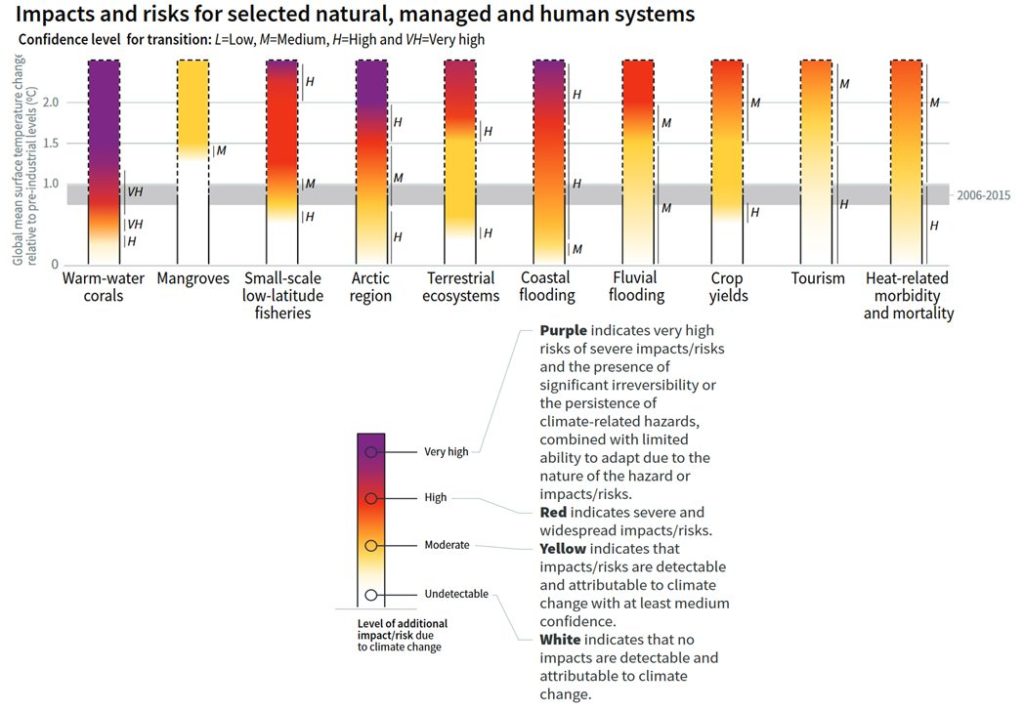
This quote is used to set the tone of the Intergovernmental Panel on Climate Change (IPCC) 2022 report on the impacts of global warming. This landmark study warns that climate hazards will increase dramatically if global temperatures continue rising and exceed 1.5oC above pre-industrial levels. However, it is not just a doom and gloom report. Along with models showing the consequences of the 1.5oC threshold, it also presents science-based strategies for averting the climate disaster.
“Climate-related risks to health, livelihoods, food security, water supply, human security, and economic growth are projected to increase with global warming of 1.5°C and increase further with 2°C…Most adaptation needs will be lower for global warming of 1.5°C compared to 2°C (high confidence).”
IPCC Headline Statements
The report shows that greenhouse gas emissions cuts alone will likely not be enough to avoid crossing the 1.5oC threshold. In addition to aggressive emissions reductions, we also need to deploy technologies and nature-based processes that capture greenhouse gasses directly from the atmosphere. The IPCC report shows that these so-called carbon dioxide removal or CDR methods must be deployed in parallel with emissions cuts and decarbonization to step back from the climate precipice.
“All analyzed pathways limiting warming to 1.5°C with no or limited overshoot use CDR to some extent to neutralize emissions from sources for which no mitigation measures have been identified.”
IPCC Report, Global Warming of 1.5oC.
Rock Dust For Climate Restoration
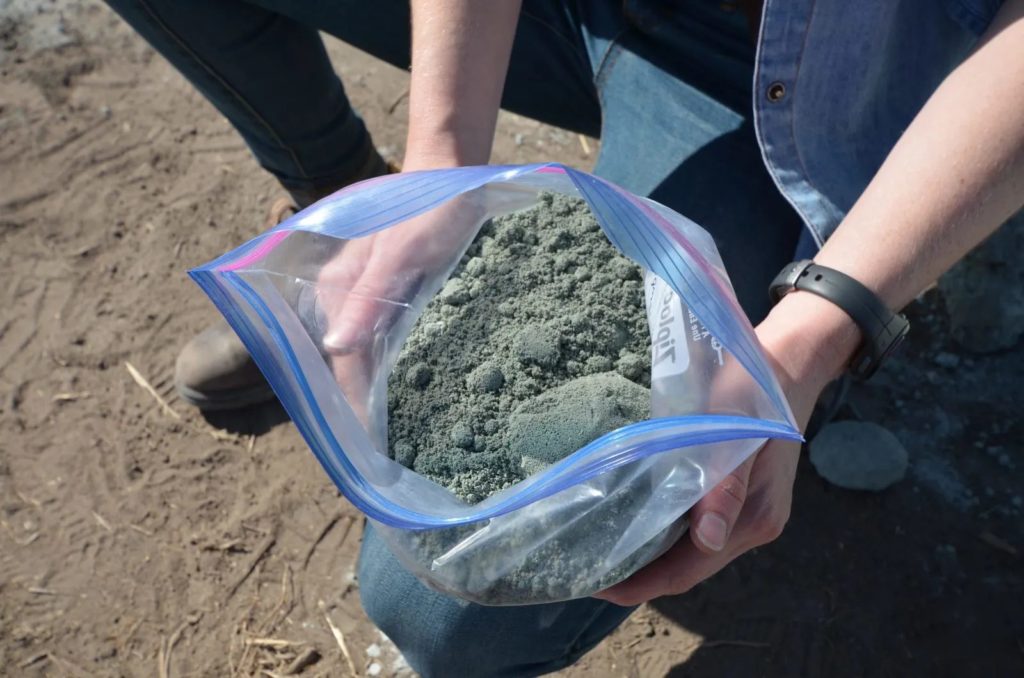
One of the most promising carbon dioxide removal methods discussed in the IPCC report is the nature-based process called enhanced rock weathering or ERW. This intervention involves speeding up the natural process by which excess carbon dioxide (CO2) is removed from the atmosphere. On geologic timescales, natural rock weathering removes around one gigaton (i.e., one billion metric tons or 2.2 trillion pounds) of atmospheric CO2 yearly. Over geologic time, this process has kept the climate relatively stable, allowing life to flourish and evolve. The problem is that natural rock weathering can’t keep up with the unprecedented rapid rise in CO2 emissions caused mainly by the burning of fossil fuels since the Industrial Revolution.
Enhanced rock weathering is a process by which scientists speed up natural weathering by milling rocks into a fine powder. The dust-sized minerals that make up the ground rock dissolve much more rapidly than intact rock deposits, thus enhancing their carbon dioxide removal potential.
One of the great advantages of ERW is that rock dust can be applied to agricultural lands, where it acts as a natural fertilizer while simultaneously removing carbon from the atmosphere. As rock dust minerals weather, they release plant nutrients such as magnesium, calcium, potassium, phosphorus, and a host of essential trace elements into the soil. The weathering process also converts CO2 into a geologically stable form of carbon called carbonate (or, more specifically, bicarbonate). The carbonate molecules may either precipitate as solid minerals such as calcite or they may be transported to the ocean where they benefit sea life by counteracting ocean acidity. So, if suitable rock types are used and not too much is applied, enhanced rock weathering applications can be triply beneficial: capturing carbon, improving soil fertility, and improving ocean acidity.
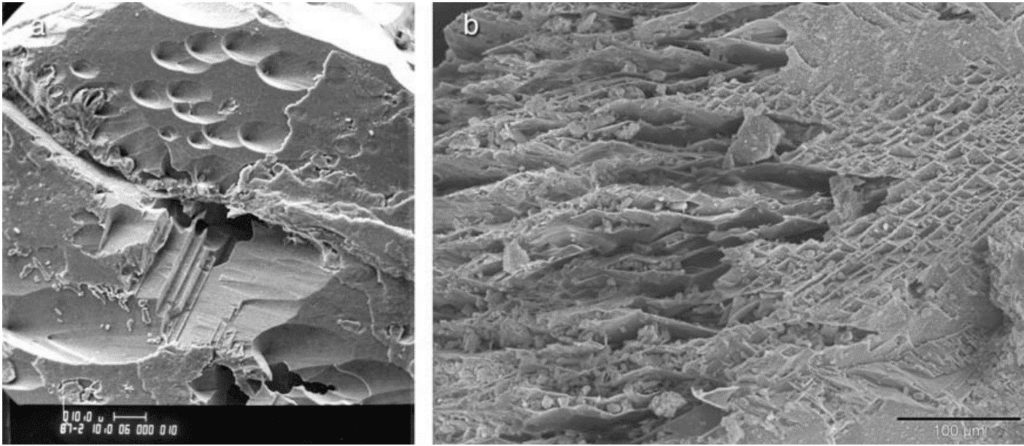
How Much Carbon Can Rock Dust Capture?
A recent study by scientists at Yale University, Georgia Tech, and Texas A&M has shown that the large-scale deployment of ERW could capture as much as 215 gigatons of CO2 by 2080. This would play a significant part in staying below the 1.5oC global warming threshold set by the IPCC. A regional breakdown showed that the agricultural application of ERW throughout North America (particularly the Midwestern US), South America, Europe, and Russia would result in yearly carbon dioxide removal rates of around 1 metric ton of CO2 removed per hectare (0.45 tons per acre). In comparison, croplands in Africa, Thailand, eastern China, and India show yearly rates as high as 1.6 metric tons of CO2 removed per hectare (0.7 tons per acre).
These important findings are based on state-of-the-art modeling developed around the latest mechanistic understanding of rock weathering and soil science. The results are timely and essential for understanding the CDR potential of ERW on a global scale. Field studies of ERW are also underway. These experiments provide real-world data from working farm fields that can be used to confirm and refine the model projections.
Enhanced Rock Weathering Potential in Water-Stressed Environments
A recent field study by researchers from University of California Davis and Cornell provides ground-truth data showing that ERW is not only a potent carbon dioxide removal method but also works in drought-stricken regions. For these field experiments, a magnesium, calcium, and potassium-rich rock dust called metabasalt was applied to corn fields at the Working Lands Innovation Center near Davis, California. These experiments used 40 tonnes per hectare (18 tons per acre) of pure metabasalt rock powder. For another trial, the metabasalt was mixed with the magnesium-rich mineral forsterite and applied to adjacent corn fields (also at 40 metric tons of rock per hectare). The tests were conducted in 2020 when a winter drought hit the field site. Only 5.5 inches (141mm) of precipitation was recorded at the site from November through February. Despite the low water levels and lack of ground cover plants over the winter, samples taken at different depths within the soils revealed that the metabasalt and metabasalt + forsterite rock powders had weathered and consumed CO2 in the process.
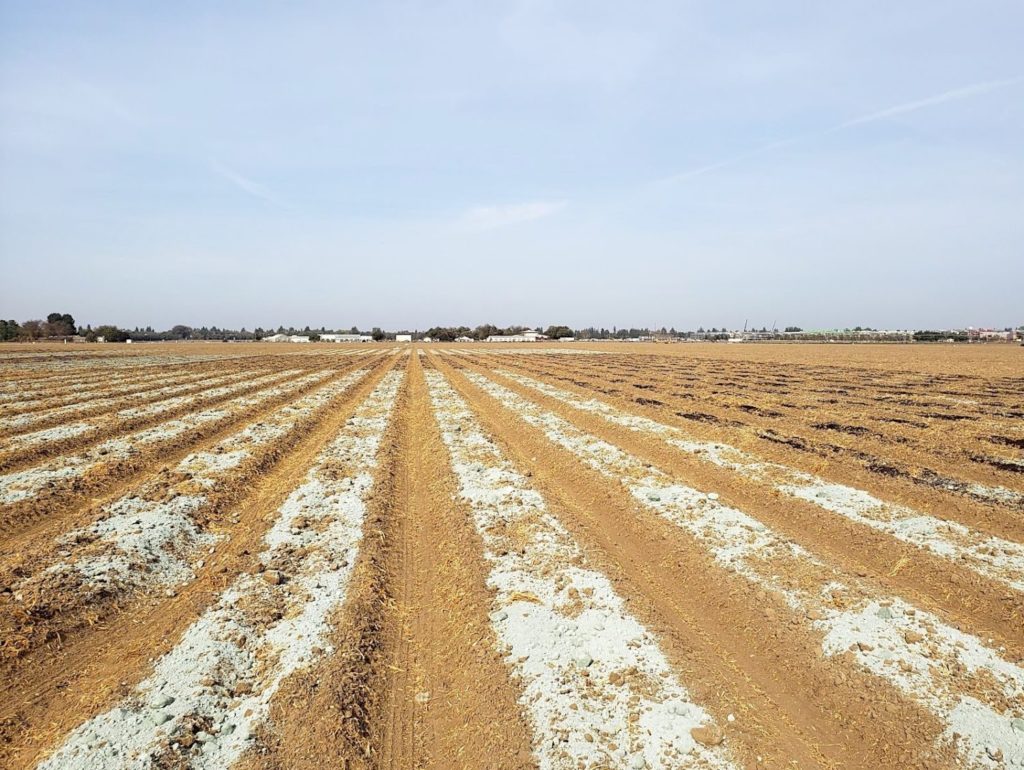
By measuring the levels of bicarbonate and other molecules in the soils, the scientists determined how much of the rock powder had weathered and how much CO2 had been consumed in the process. As mentioned above, bicarbonate is a geologically stable molecule that can keep carbon out of the atmosphere for thousands of years. By accurately measuring the bicarbonate levels in the treated fields, the scientists were able to calculate carbon dioxide removal rates of up to 0.15 metric tons of CO2 removed per hectare (0.07 tons per acre) from November through February. This is a unique dataset and study because it provides direct evidence for the rapid removal of carbon dioxide under dry conditions. And while the CDR value is lower than the estimate of 1 metric ton per hectare cited in the Yale-led modeling study, the results are groundbreaking because the weathering and CO2 consumption occurred under drought conditions.
These findings are important because, as the Yale-led study points out, for ERW to live up to its great promise as a nature-based CDR method, it must be scaled globally. Water-stressed lands will be an important part of this intervention. As stated in the UC Davis-led study: “Given that 41% of earth’s land surface is covered by drylands that are expanding due to climate change (~10% by 2100), enhanced weathering in arid and semi-arid lands must be investigated.” (Holzer et al., 2023).
As shown on the map below, there are large areas of dry lands on every continent. These field results show that enhanced rock weathering can capture carbon and improve soil nutrient levels in arid environments, which will be essential for planning and assessing regional-scale deployments of ERW around the world.
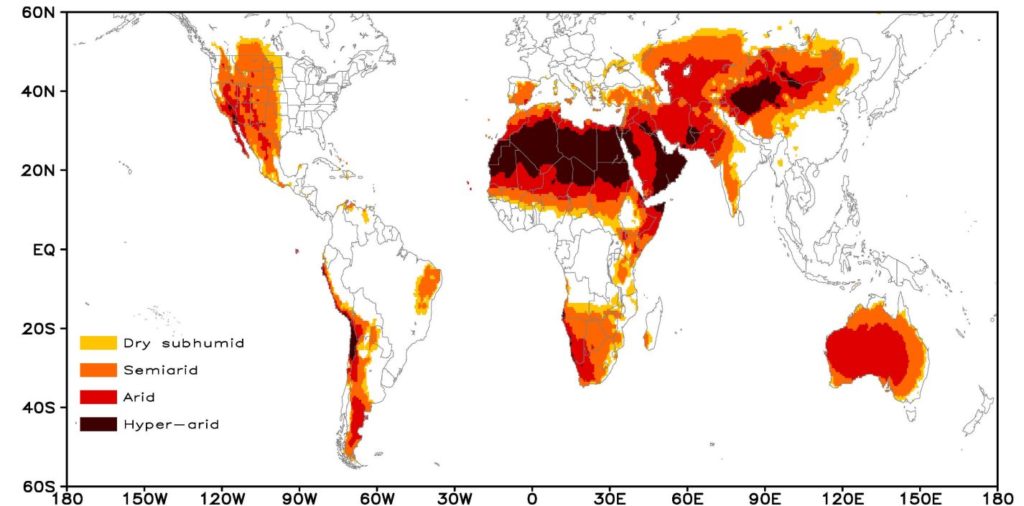
Conclusion
The IPCC report highlighted both the threat of global warming and the potential for ERW to mitigate it. Both the modeling study led by Yale researchers and the field experiments of the UC Davis and Cornell team demonstrate the enormous potential of using natural rock dust for large-scale carbon dioxide removal (even in arid environments). These and other recent enhanced rock weathering research projects highlight how this nature-based process can play a central role in keeping global temperatures from exceeding the IPCC target of 1.5oC. By reducing atmospheric CO2 and enriching soils in essential plant nutrients, enhanced rock weathering not only mitigates climate hazards such as extreme weather, but also directly addresses food and nutrient security issues and lowers reliance on expensive and potentially harmful synthetic fertilizers. Who would have thought that something as familiar as rock dust could help us adapt to ongoing global warming and stabilize the climate?
James Jerden is an environmental scientist and science writer focused on researching and promoting sustainable solutions to urgent environmental problems. He holds a Ph.D. in geochemistry from Virginia Tech and a Master’s degree in geology from Boston College. Over the past 20 years, James has worked as a research geochemist and science educator. He joined Remineralize the Earth because of their effective advocacy, research, and partnership projects that support sustainable solutions to urgent environmental issues such as soil degradation (food security), water pollution from chemical fertilizers (water security), deforestation, and climate change. As a science writer for RTE, his goal is to bring the science and promise of soil remineralization to a broad, non-technical audience. When not writing, he can be found at his drum set.
Support us on Patreon
Thank you for joining us today! Please become a member of RTE and support us on Patreon. Unlike many larger organizations, we work with a team of determined and passionate volunteers to get our message out. We aim to continue to increase the awareness of remineralization to initiate projects across the globe that remineralize soils, grow nutrient dense food, regenerate our forests’ and stabilize the climate – with your help! If you can, please support us on a monthly basis from just $2, rest assured that you are making a big impact every single month in support of our mission. Thank you!

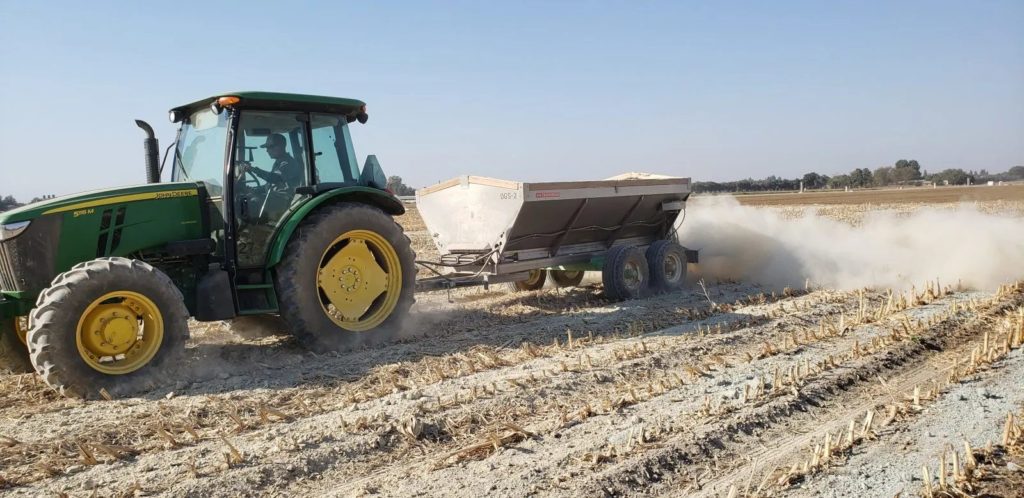






Got something to say?